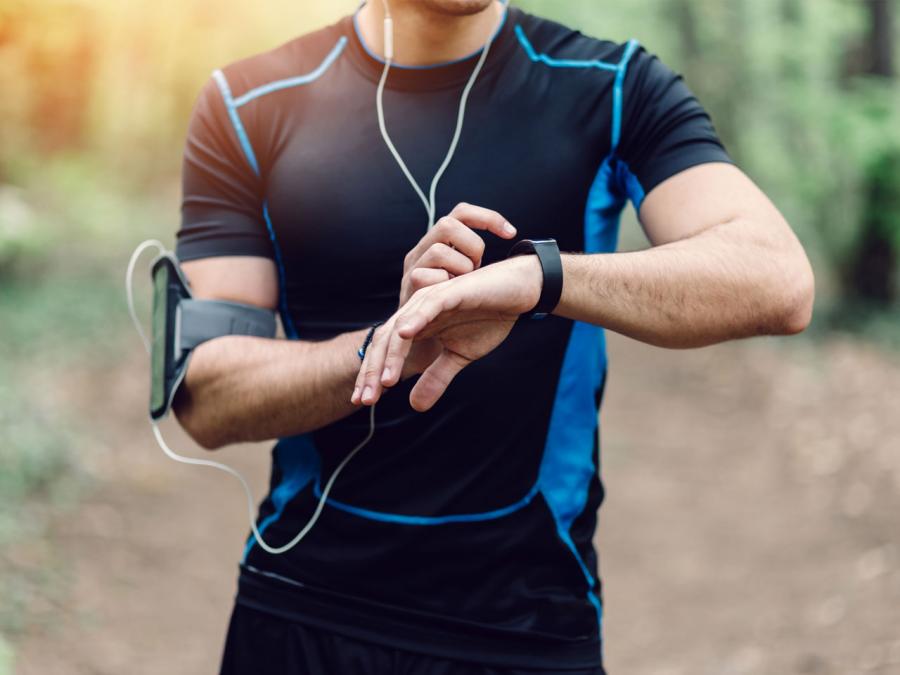
There’s something about the beginning of the year that makes us want to change for the better – mentally, physically, and spiritually. The turn of the year, along with the fact that the holidays typically bring overeating, overspending, and overindulgence, means for the vast majority that making some positive changes for the New Year is the only logical thing to do.
So, if you’ve taken the New Year as an opportunity to transform yourself physically, chances are you might be struggling right about now. Although there isn’t technology that can automatically shrink your waist, there are a number of technological devices like the iPhone X designed to help ease the burden of strict diets and exercise. The iPhone, in particular, allows users to monitor their muscle gain by keeping track of their weight, body mass, and protein level.
That said, for most people, the essential fitness kit now includes technological gadgets that not only help individuals lose weight but encourage them to do so by moving around. As technology becomes smaller and smarter, so do digital exercise programs that includes digital fitness plans, and heart-rate monitoring.
But in order to make positive changes in your life – whether on the first day of the year or any day for that matter – you need to set yourself up for success in the long run. After all, success in the weight room isn’t just about having the right attitude; it’s about creating strategies that encourage you when the fear of failure starts to rise. Fortunately, there are ways technology can help.
Listen to Music: According to OregonLive, the state of Oregon produced a lot of popular bands throughout the years. This not only gives the state bragging rights, but it also means finding a song to keep you pumped up while working out shouldn’t be that hard. Right? Especially since listening to music actually helps you focus, avoid distractions, and not get bored in the weight room – which is easy to do. You can use your iPod, iPhone, or Android phone to listen to different podcasts, news stories, sports updates, and weather tips while you exercise. These devices can also be used to watch movies, and television shows while running on the treadmill or while pumping iron.
Heart Rate Monitoring Device: When it comes to heart health, perhaps the greatest tool of all is the technological devices that help monitor the most important muscle in the human body. That said, heart monitors (like the ones found at sonohealth.org) are great ways to help people build fitness. In fact, tracking your heart rate with a monitor tells you how hard – or easy – your heart is working in the gym.
Measuring your heart rate can also help you from injuring yourself by running too fast, or running too often. Remember, because your heart is a muscle – it becomes stronger as you exercise and weaker when you don’t. This means that during an aerobic workout, the muscles in the body demand oxygen. As a result, your heart begins to pump faster to deliver the oxygen needed throughout the body. But in order to understand and condition your body, you must first analyze your heart’s performance – and that’s where the monitor comes into play. It’s equally important to understand the four different types of heart rate. They are:
- Resting heart rate
- Maximum heart rate
- Training heart rate
- Recovery heart rate
Pedometers: Pedometers are typically used to count and monitor the number of steps taken throughout the course of the day by an individual; meaning that every time someone walks, jumps, run, or jog, this device makes a digital log in its database. That’s what makes this device so reliable. The best part, however, is actually seeing your results over time.
But how can a pedometer be used for weight loss?
Well, research has shown that individuals who wear pedometers on the daily basis have a much better chance of increasing their physical activity than those who don’t – by nearly half a mile. With that in mind, here are a few tips on how to best use this simple, yet technologically advanced device for weight loss.
1. Set Daily/Weekly Goals
If you’re considering using a pedometer to help you lose weight, then make sure to set goals that are within reach. For example, if you want to walk 14,000 steps per day, you’ll have to plan your day out accordingly. In other words, you’ll have to run, jog, and cycle your way to those 14,000 steps, then start over once you’ve hit your daily goal for the next day. On the days you plan on doing outdoor activities – like hiking, swimming, or biking, you can always make a mental note of your exercise routine and make it up later. However, that’s easier said than done – especially when your muscles are aching and it’s raining outside. But discipline is the key to success here.
2. Use Your Pedometer to Track Your Calorie Intake
Keeping track of your calorie intake doesn’t just help treat gastroesophageal reflux disease (GERD), but it also encourages individuals to live a healthier lifestyle. This means that if for some reason you haven’t seen a difference in your workout routine, you’ll have a record to back on to see where you might have holes in your diet or workout routine.
So, if you’re still struggling to meet those New Year’s resolutions, motivate yourself to feel more energetic. Instead of making resolutions to spend more time in the gym and lift heavier weights, plan on living a healthier life in general. One that includes getting the proper nutrients, staying physically fit, and encourages mental toughness.




